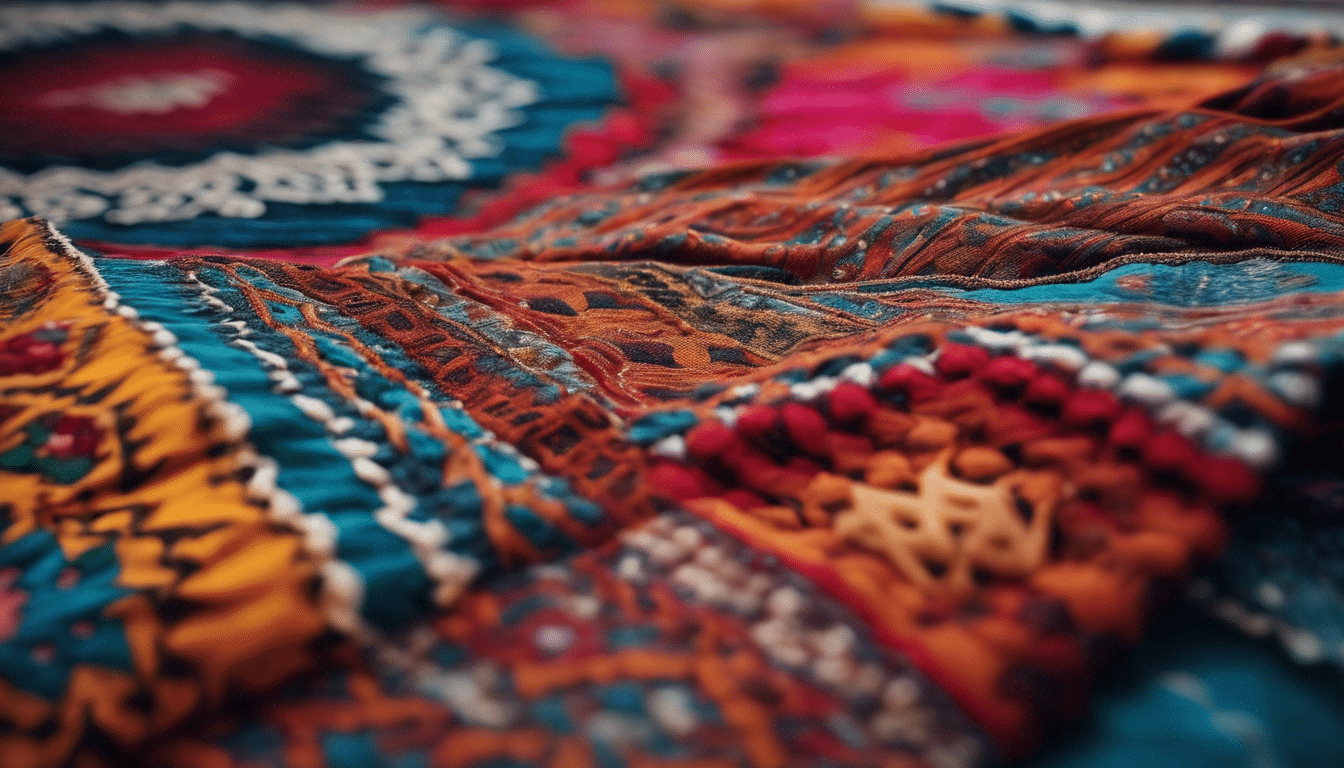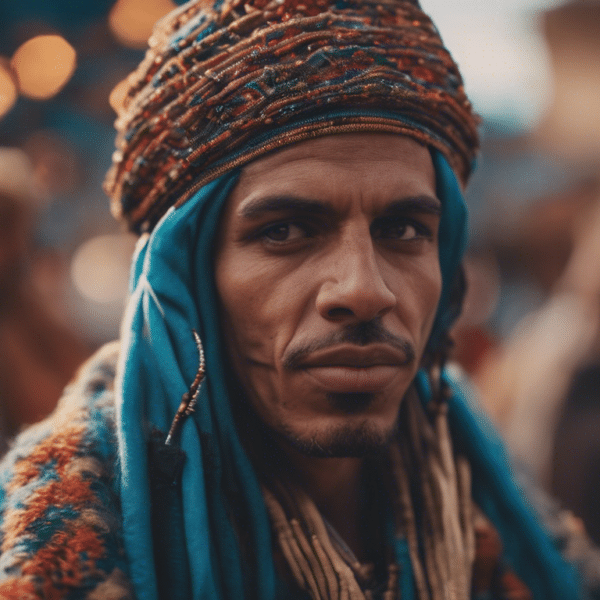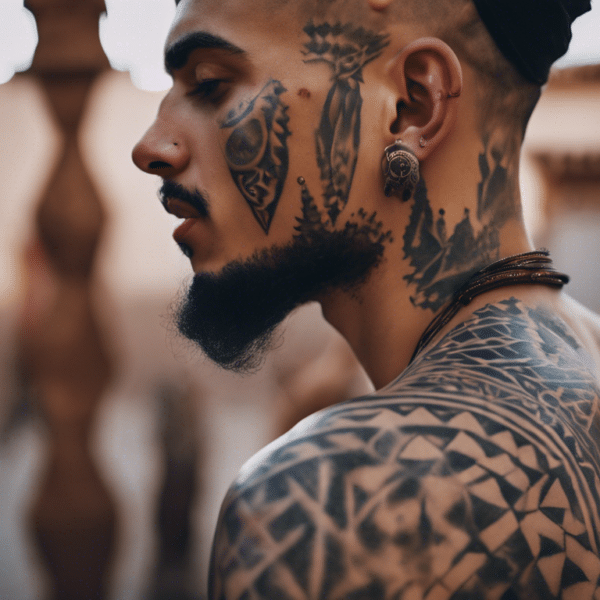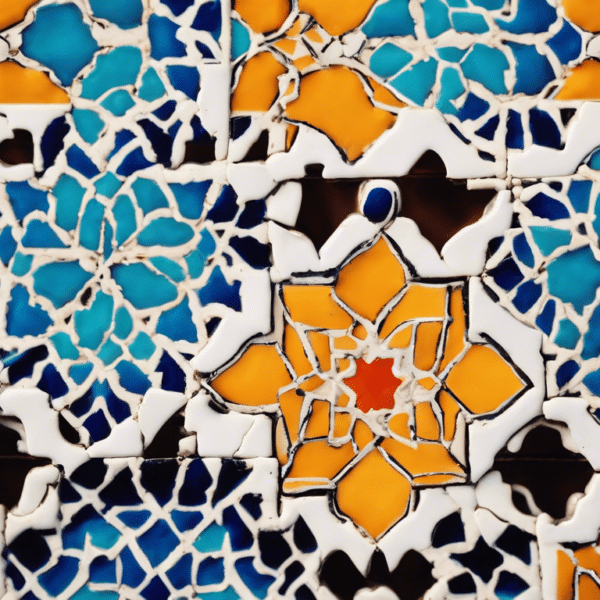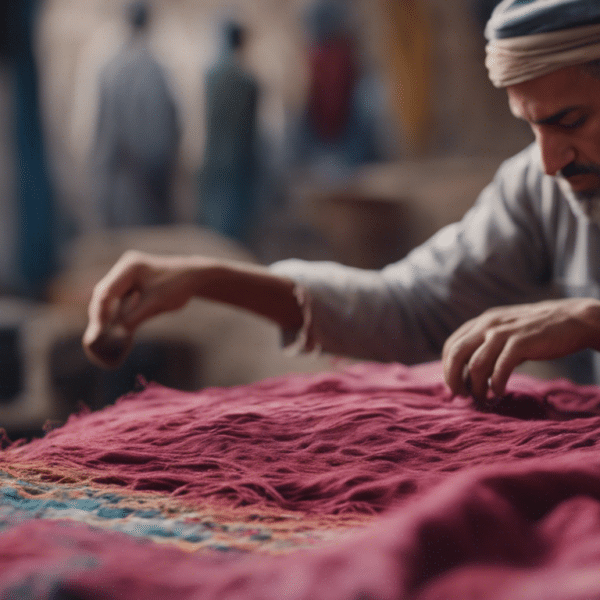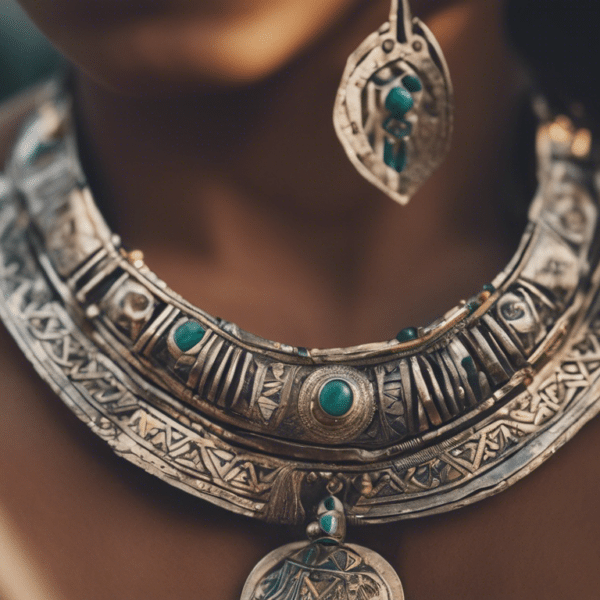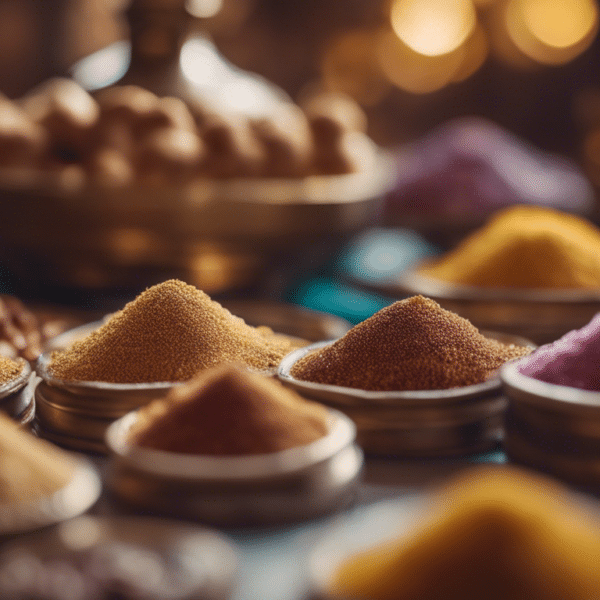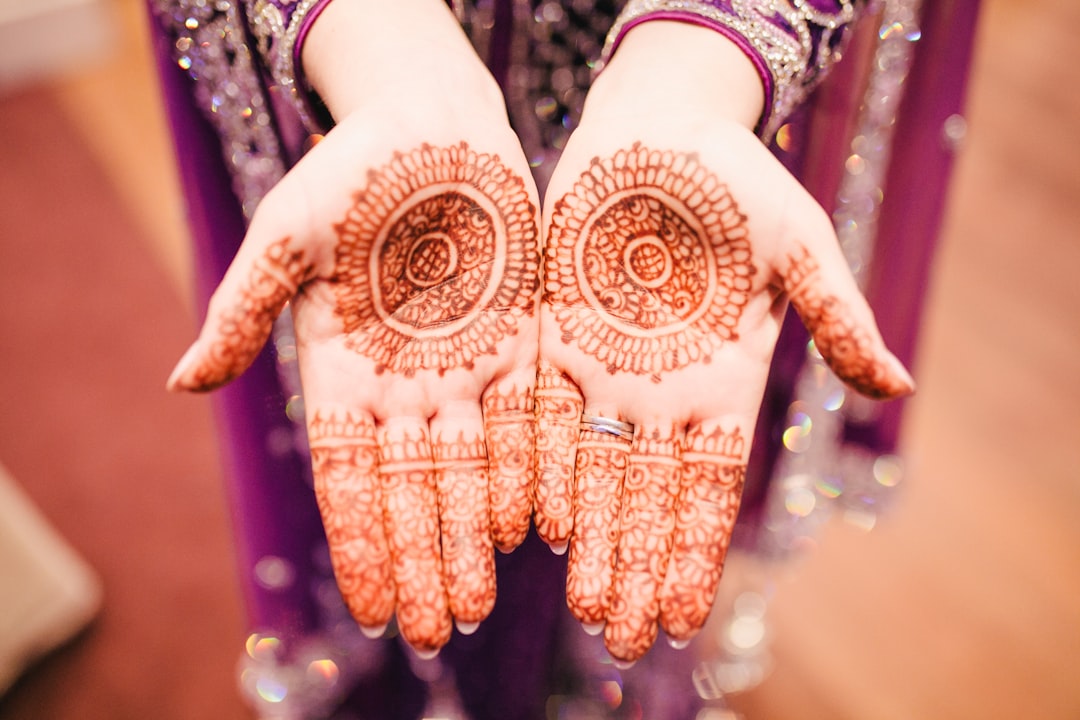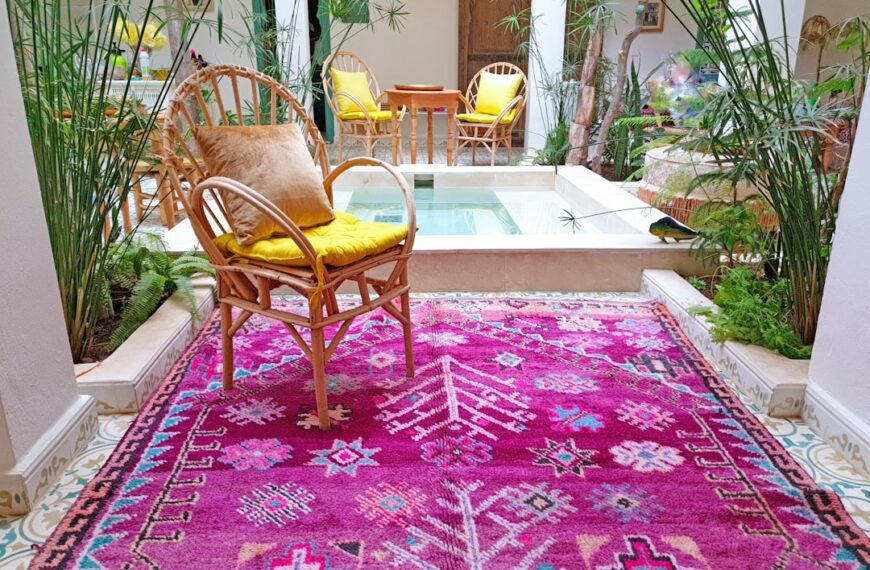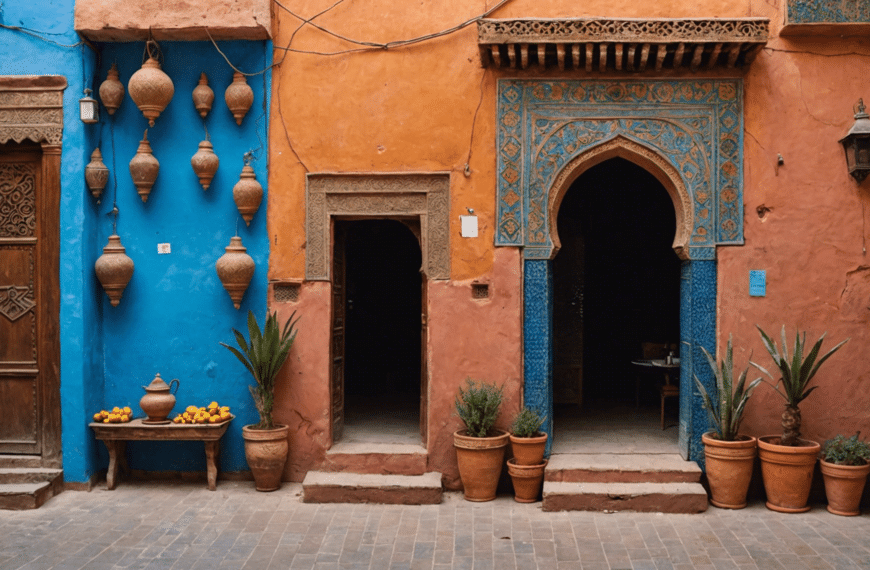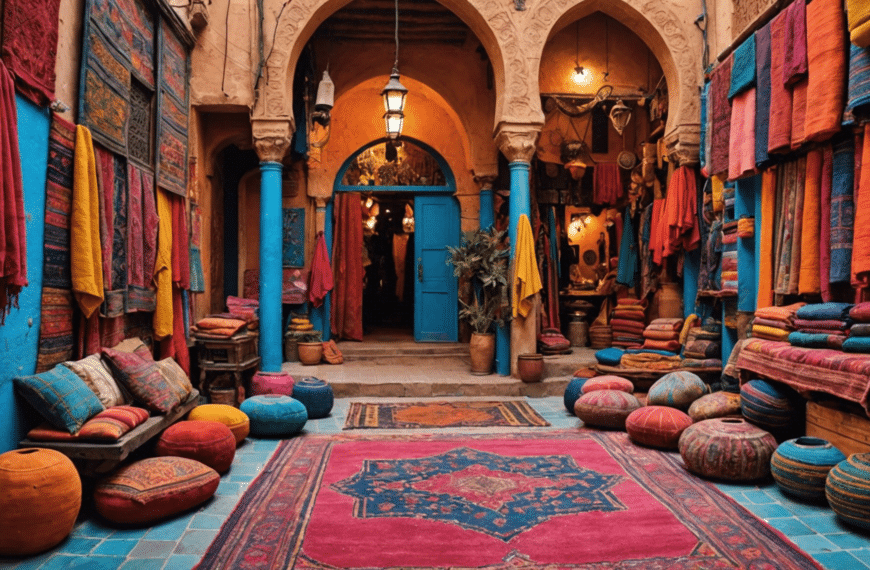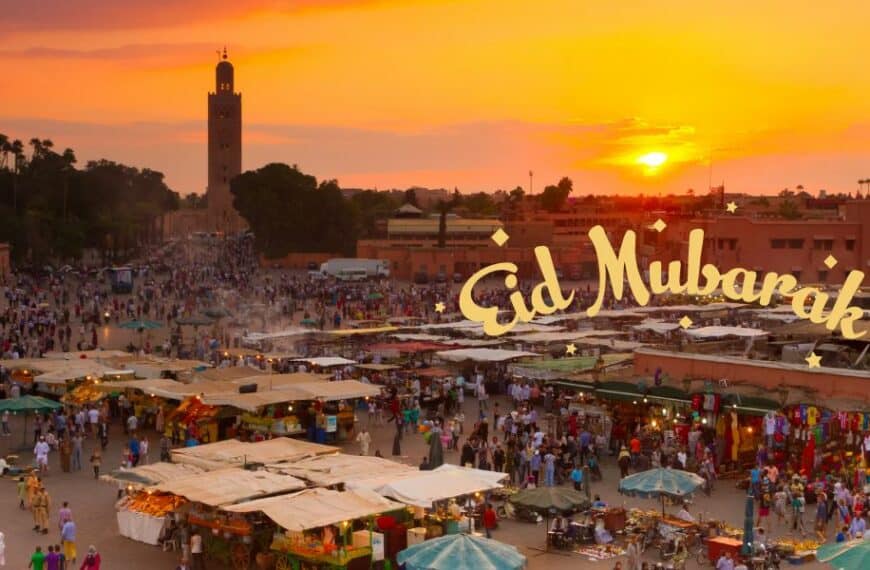As the golden warmth of the Marrakech morning envelops the bustling souks, a rich tapestry of sights, sounds, and scents greets the senses. It is here, amidst the hum of haggling voices and the clinking of artisans at work, that the soul of Moroccan textile art beats with vibrant intensity. In this realm, every thread is spun with history, and each color tells its own spellbinding story.
Enchanting voyagers from across the globe, Moroccan textile art is more than mere fabric; it is a journey woven through time, an intricate dance of tradition and innovation. From the delicate motifs adorning soft textiles to the geometric precision of handwoven carpets, every piece is a testament to the everlasting connection between the hands of Moroccan artisans and the heart of their heritage.
Why, you may wonder, is Moroccan textile art such an emblem of cultural uniqueness? Join us on a voyage through the senses, as we unravel the mystery behind the mesmerizing appeal of one of the world’s most distinctive artisan crafts. Discover the secrets that have been guarded by generations, and reinvented by the passion of those who hold their legacy.
In our upcoming journey of exploration, we will delve into the extraordinary blend of Amazigh (Berber) symbols, Arabesque abstractions, and Saharan hues that culminate in the creation of textiles so captivating, they could only originate from the rich soils of Morocco. Let us guide you, thread by luminous thread, into the heart of this spellbinding world, where every weave is an ode to the identity of a nation and every knot is a connection to the past. Welcome to the story of Moroccan textile art – an enduring narrative of beauty and craftsmanship.
The History of Moroccan Textile Techniques
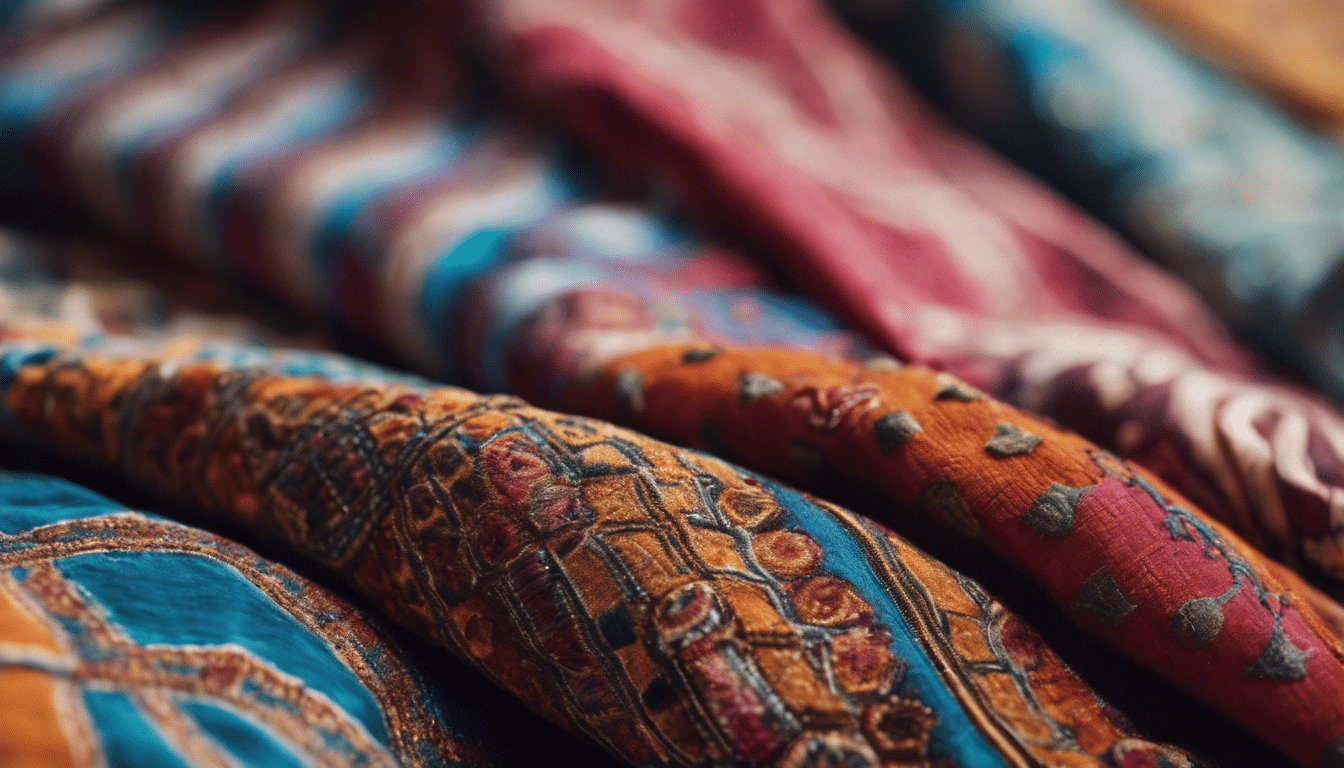
In the intricate weave of history, Moroccan textile art emerges as a vibrant tapestry, rich in color, technique, and tradition. This art form stretches back to the dawn of Morocco’s civilization where indigenous Berber tribes, having perfected the art through generations, laid the foundation for the Moroccan textile heritage known across the globe today.
Ancestral Threads
The history of Moroccan textile techniques is intricately bound to the country’s diverse cultural tapestry. Renowned for its geometric patterns, bold colors, and intricate designs, these textiles are not merely decorative items; they are an embodiment of the nation’s soul and history. The traditional loom, on which artisans create these pieces, has long been a fixture in Moroccan homes, where patterns are not just woven into the fabric, but also into the very fabric of Moroccan life.
The Berber Influence
Among the most revered in Moroccan textile art is the hand-woven art of the Berbers or Amazigh people. Known for their skills in creating hand-woven carpets and blankets, the designs often hold ancient symbols and stories passed from generation to generation. The Berber loom, a simple yet effective apparatus, became the vehicle for the creation of the coveted Moroccan rugs such as the Beni Ourain and the Azilal, each narrating a distinct narrative of life in the Atlas Mountains.
Dyeing Techniques
Natural dyes have been central to the Moroccan textile tradition, with vibrant colors derived from saffron for yellows, henna for reds, and indigo for deep blues. The dyeing process itself is considered an art, where master dyers spend years cultivating the skill to create the perfect hue. These practices are not just a matter of technique but are steeped in historical and personal significance.
Embroidery: Stitching Histories Together
Equally significant is the craft of Moroccan embroidery, a skill often learned within the home and typically passed down from mother to daughter. Fes and Meknes are notably famed for this expertise, showcasing intricate stitching techniques that ornament everything from Kaftans to pillowcases. Classic motifs include geometric forms and teardrop shapes, each presenting a blend of Andalusian, Oriental, and Saharan influences, amalgamated over centuries of trade and cultural exchange.
Preservation of the Craft
In a changing world, the preservation of Moroccan textile techniques becomes paramount. Artisans and co-operatives work tirelessly to keep these traditions alive, passing down skills that are crucial to the cultural identity of Morocco. Organizations and collectives often hold workshops and training programs to ensure that the intricacies of the art are not lost amidst the tide of modernization, enabling a rebirth of interest in younger generations.
In conclusion, when one marvels at the gallery of Moroccan textiles, one sees a living history. To touch a handwoven Moroccan carpet is to touch the past – to feel the tensile strength of a story woven through time, colored with natural dyes derived from the Moroccan soil, and brought to life by the hands of artisans whose names might fade, but whose artistry beats on, heart-strong, a symphony of threads and colors still resonating through the bustling souks and tranquil homes of the Moroccan landscape.
Influence of Cultural Diversity on Moroccan Fabrics
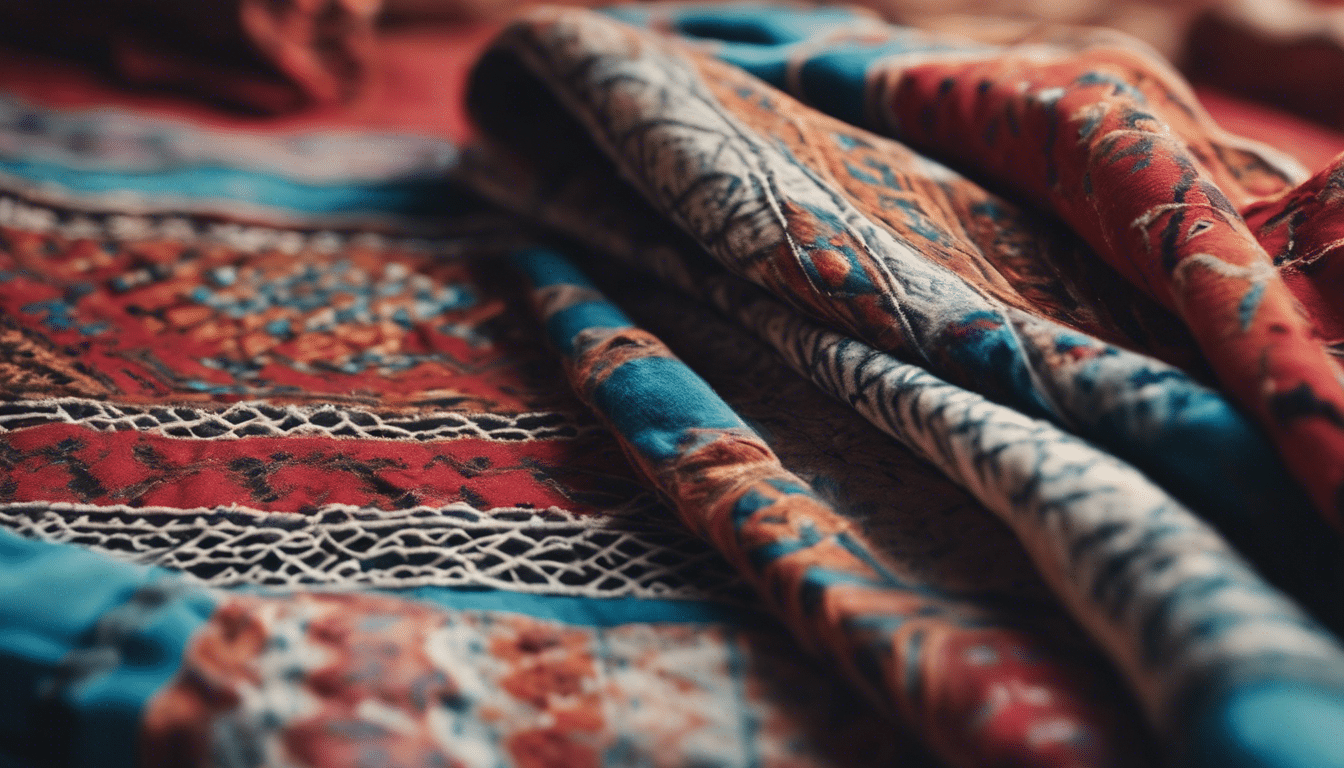
The Rich Tapestry of Moroccan Textile Heritage
From the bustling souks in the heart of Marrakech to the serene Atlas Mountains, the tapestry of Moroccan textile art is as diverse as the country itself. A poignant reflection of Morocco’s unique position at the crossroads of cultures, the fabrics here tell a story steeped in history, punctuated by the influence of various civilizations that have traversed and settled in this North African haven.
Cultural Interweaving: The Fabric of Moroccan Society
Moroccan textiles are a testament to the cultural synthesis that is emblematic of the nation’s history. The Berbers, or Amazigh people, indigenous to North Africa, laid the foundational threads of Moroccan fabric art, introducing earthy tones and geometric patterns that capture the essence of the land. With the Arab conquest came opulent threads of Islamic art, weaving into the existing tapestry intricate calligraphy and arabesque motifs.
The interplay of these cultures can be seen in every piece of fabric, be it in the vibrant colours of a Djellaba or the elaborate embroidery on a Kaftan. Furthermore, the region’s trade routes, which brought Sub-Saharan Africans, Europeans, and Ottomans through its heart, have each contributed a stitch to the nation’s vibrant textile pattern, infusing Moroccan fabrics with a kaleidoscope of influences that is unrivaled.
A Spectrum of Styles: Celebrating Diversity in Weaves and Threads
As you traverse the variegated landscapes of Morocco, you’ll find that each region has a distinct textile identity. The coastal cities, with their Andalusian connections, offer delicate brocades, while the mountainous areas showcase heavy, hand-loomed woolen fabrics known as Berber blankets.
Silk threads from the east interlace with native cotton, creating sumptuous textures that are as luxurious to the touch as they are pleasing to the eye. The Jewish communities, with their expertise in dyeing techniques, have left behind a legacy of vibrant hues that mirror the Moroccan zest for life.
The Artisans’ Palette: Craftsmanship Influenced by Diverse Artforms
One cannot speak of Moroccan textiles without paying homage to the artisans who are the weavers of this story. Their looms are the canvases on which a rich tableau of cultures is painted. The technique of Fassi embroidery, for example, is a meticulous art form that demands patience and precision, skills often passed down through generations.
In addition to traditional practices, contemporary Moroccan textile artists are experimenting with new materials and techniques, blending ancient wisdom with modern innovation. This dynamic creativity ensures that Moroccan fabrics are not relics of the past but living, evolving expressions of a society’s journey through time.
Preserving Tradition: The Fabric of the Future
As the world becomes increasingly globalized, preserving the individuality of Moroccan textiles is more important than ever. Efforts by cooperatives, such as those in the High Atlas Foundation, are vital in sustaining the traditional techniques and ensuring that the diverse cultural threads that make up Moroccan fabric art are not lost.
Whether it’s through promoting fair trade practices or facilitating workshops for younger generations, these initiatives keep the legacy of Moroccan craftsmanship alive. They secure a place for Moroccan textiles on the global stage, showcasing the vibrant confluence of cultures that define them.
In conclusion, the fabric of Morocco is indeed a fabric of life, interwoven with the threads of many cultures. Each thread tells a story, each color sings a song, and together, they form a tapestry of incomparable artistry that continues to grow and adapt, much like Morocco itself.
Signature Patterns and Color Schemes in Moroccan Weaving
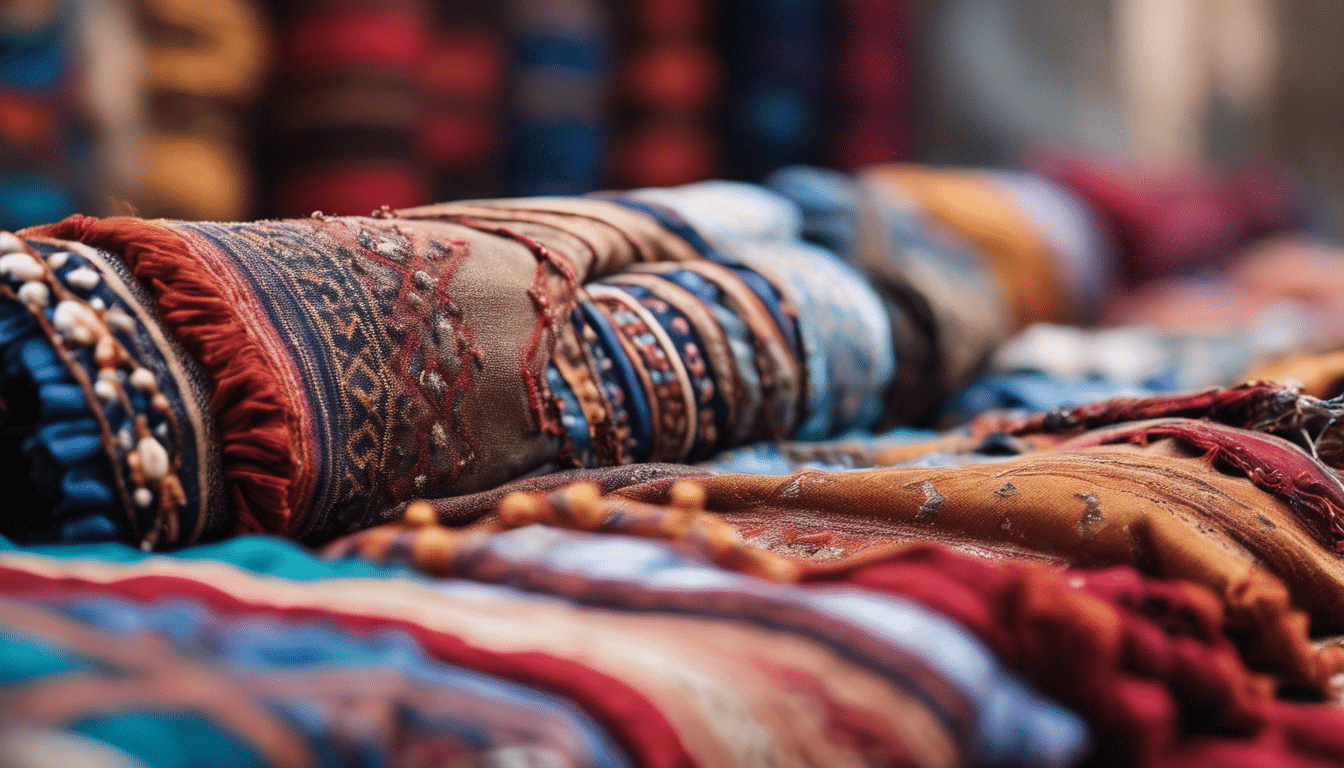
Moroccan Textile Art: A Tapestry of History and Elegance
In the heart of Morocco, an art form has been flourishing, echoing the nation’s rich cultural tapestry. Moroccan textile art, a kaleidoscope of colors and intricate patterns, continues to tell tales of tradition and modernity. The signature patterns and color schemes in Moroccan weaving do not just adorn the fabric but narrate a history steeped in cultural influence and artisanship.
A Confluence of Patterns: Symbols Woven with Meaning
Moroccan weaving is not simply an act of creating a fabric but a mode of storytelling, where every symbol represents a facet of life, nature, or belief. Patterns such as triangles hint at the human form or familial structure, while diamonds might signify the eye, protecting against the evil glare. Zigzags mirror the undulating sands of the Sahara, and chevrons form a metaphor for the rugged Atlas mountains.
Color Schemes: The Language of Moroccan Palettes
The color schemes in Moroccan textile art are as diverse as its lands and people. The indigo blues pay homage to the vastness of the skies and seas, while fiery reds and warm oranges tell stories of the burning dunes at sunset. Emerald greens and deep purples, often found in the city of Marrakesh, are reminiscent of the region’s lush gardens and imperial history.
The Weaving Process: An Ode to Detail and Precision
The intricate process of Moroccan weaving involves more than just meticulous craftsmanship; it is a dedication to perfection with every thread interlacing to form a unique piece of art. The two primary weaving techniques are:
– The flatweave, a light and versatile fabric, often seen in Moroccan rugs like the Kilim.
– The pile weave, which creates a thicker textile, lending a plush feel to carpets such as the famed Berber rugs.
Each method engenders a distinct texture and depth, showcasing the versatility of Moroccan fabrics.
Preservation through Innovation: The Future of Moroccan Weavings
As modernity intertwines with tradition, Moroccan textile art is not just preserved; it evolves. The infusion of contemporary design with traditional methods has given birth to textiles that appeal to the global aesthetic while grounding itself in heritage.
In conclusion, Moroccan textile art encapsulates more than a visual delight; it’s a sensory experience, a tactile connection to history and culture. Each fabric is a canvas, every thread a story—a composition of what was, what is, and promises of what is yet to be woven.

